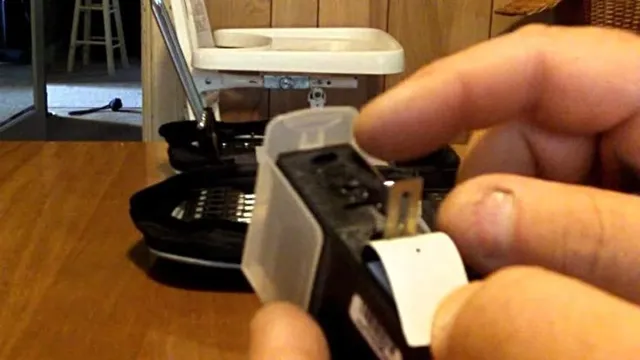If you’ve ever experienced printer issues — and let’s face it, who hasn’t? — you know how frustrating it can be. One moment, you’re happily printing out important documents or cherished photographs, and the next, your printer seems to have gone rogue. It’s unresponsive, it’s not printing correctly, or it’s showing error codes you can’t decipher.
In situations like these, resetting your Lexmark printer can be a lifesaver. It’s a surprisingly simple process that can solve a number of problems related to your printer’s settings. In this step-by-step guide, we’ll walk you through the process of resetting your printer, so you can get back to printing what you need without any hiccups.
Prepare for Reset
If your Lexmark printer is giving you trouble, it might be time to reset it. This process can help to resolve many common issues you might be encountering, such as error messages, connectivity problems, and slow printing speeds. To reset your Lexmark printer, begin by turning it off and unplugging it from the power source.
Wait a few minutes, then turn the machine back on and wait for it to fully restart. This should clear any temporary glitches or errors that could be causing problems. If this doesn’t fix the issue, you might need to perform a factory reset, which will erase all of your settings and data.
This should only be done as a last resort, as it will require you to reconfigure your printer from scratch. Nonetheless, if you’re still experiencing problems after a standard reset, a factory reset could be worth trying. By taking these steps, you can help to keep your Lexmark printer running smoothly and efficiently.
Disconnect from Power and Network
Before resetting your device, it is crucial to disconnect it from both the power and the network. This will provide a clean slate for the reset process to occur. First, disconnect the power source by unplugging the device from the wall.
Once you have done this, proceed to disconnect the network connection. This may be as simple as turning off the Wi-Fi or unplugging the Ethernet cable. Ensuring that your device is offline and powerless will prevent any data loss or damage that could occur during the reset process.
It’s important to remember that when resetting your device, you will lose any unsaved data, so be sure to back up any important documents or files before proceeding. By adequately preparing for the reset, you’ll save yourself from potential headaches and frustrations.

Wait for a Few Minutes
When it comes to resetting your device, it’s important to prepare beforehand. One of the key steps in the process is simply waiting for a few minutes before starting the reset. This might seem counterintuitive, but it’s crucial to ensure that your device has enough time to cool down and properly shut down any running processes.
Rushing the reset can cause issues and potentially even damage your device. So, take a deep breath, walk away from your device for a few minutes, and come back with a clear mind and a device that’s primed for the reset process. By taking this simple precaution, you’ll be setting yourself up for a successful reset that doesn’t cause any unexpected problems or damage.
Reset Your Lexmark Printer
Resetting your Lexmark printer can often solve common issues such as paper jams, connectivity problems, and error messages. To reset your Lexmark printer, start by turning it off and unplugging it from the power source. Wait for at least 30 seconds, and then plug it back in and turn it on.
If this doesn’t work, try performing a hard reset by turning the printer off and unplugging it again, but this time hold down the power button for 10-15 seconds before plugging it back in and turning it on. It’s also important to note that resetting your printer may cause it to lose any custom settings or configurations, so be sure to refer to your user manual for specific instructions on resetting your Lexmark printer. With just a few simple steps, you can reset your Lexmark printer and get it back up and running smoothly.
Connect to Power and Network
If you’re having trouble connecting your Lexmark printer to power or network, resetting your printer may be the solution. The first step is to turn off the printer, unplug it from the power source, and wait 30 seconds before plugging it back in. Once the printer has been plugged back in, turn it on and wait for it to initialize.
It’s important to make sure that the printer is connected to the correct network, so check the settings on your computer or mobile device to verify the network connection. If resetting the printer doesn’t resolve the issue, try troubleshooting the problem with Lexmark support or an authorized service center. By following these steps, you can easily get your Lexmark printer back up and running in no time.
Press and Hold Reset Button
If you’re having issues with your Lexmark printer, resetting it might be the solution you need. One way to do this is by pressing and holding the reset button. However, the location of this button may vary depending on the model of your printer.
It may be on the back, the bottom, or even inside the printer. Once you find it, simply press and hold it for a few seconds until you see the printer lights flash or reset prompt appear. This should clear any errors or issues with your printer and restore it to its default settings.
It’s important to note that resetting your printer may erase any customized settings or configurations, so you may need to set them up again. Overall, pressing and holding the reset button is a simple and effective way to troubleshoot any problems you may be having with your Lexmark printer.
Release Reset Button after 10 Seconds
Resetting your Lexmark printer can come in handy when you encounter a glitch or when it stops functioning properly. To reset your printer, press and hold the reset button on the control panel for about ten seconds, and make sure to release it only after the time elapses. This action will trigger a reset process and cause your printer to reboot and return to its default setting.
While you reset your printer, make sure that it is not connected to any power source, and all the cables are unplugged. Once the reset process is complete, you can reconnect your printer and start printing your documents again. By resetting your Lexmark printer, you can solve various printing issues like paper jams, connectivity problems, and software glitches.
It is like giving your printer a fresh start, which can help you eliminate any problems that were causing your printer to malfunction. Remember to keep a track of any error messages displayed on the printer’s screen before resetting it. However, if resetting the printer does not work, consider contacting Lexmark customer support.
Overall, resetting the Lexmark printer is a simple process that can help you resolve any minor issues without seeking professional help.
Test Your Printer
If you’re experiencing issues with your Lexmark printer, resetting it can help troubleshoot most problems. To reset your Lexmark printer, start by turning it off and unplugging it from the power source. Wait for a few minutes before plugging it back in and turning it on.
Once it’s booted up, try printing a test page to see if the issue has been resolved. If not, you may need to reinstall the printer driver or check for any hardware malfunctions. Overall, resetting your Lexmark printer can be a simple and effective way to fix common printing problems.
So, if you’re facing any issues, give it a try before opting for more complex solutions.
Print a Test Page
Printing a test page is an essential step in ensuring that your printer is functioning correctly. It may seem like an insignificant task, but if you’re encountering issues while printing actual documents, testing your printer by printing a test page can save you time and trouble. A test page allows you to check your printer’s functionality, see if there are any clogged nozzles, and determine if the print cartridge levels need to be topped off.
Additionally, a printed test page can reveal if your printer’s alignment is off, or if there are any color inaccuracies. To print a test page, you can follow the instructions that come with your printer model. Generally, you can navigate to the “Printers and Devices” settings section on your computer, select the printer you want to test, and press the “Print Test Page” button.
Once the test page is printed, you can check each aspect to ensure that your printer is working correctly. Remember, keeping your printer in good working condition can save you time and money in the long run.
Check Your Printer Configuration
Printing documents should be a simple task but sometimes things can go wrong. If your printer is not functioning properly, there could be a few reasons why. One of the first things you should check is your printer configuration.
This means checking that your printer is set up correctly with the correct drivers installed on your computer. Make sure your printer is properly connected to your computer and that there is no hardware issue. Once you have checked these basic things, it is time to test your printer.
You can do this by printing a test page from your computer. If the test page prints successfully, then your printer is functioning properly. However, if you encounter an error, this could indicate a bigger problem.
If the problem persists, you might need to contact technical support or a professional repair technician to help you resolve the issue.
Additional Tips and Tricks
Resetting a Lexmark printer can be a helpful solution when experiencing issues with the device. One tip to try is performing a power cycle, which involves turning the printer off and unplugging it for at least 30 seconds before plugging it back in and turning it on again. If the issue persists, another reset option is to perform a factory reset, which can be done by accessing the printer’s settings menu and selecting “Restore Factory Defaults.
” It’s important to note that performing a factory reset will erase any stored settings or network connections, so make sure to note any important settings before doing so. Additionally, keeping the printer’s firmware up-to-date and performing regular maintenance, such as cleaning the printhead, can also help prevent issues that may require a reset. By following these tips, you can increase the lifespan of your Lexmark printer and avoid frequent disruptions to your workflow.
Conclusion
In conclusion, resetting your Lexmark printer is like hitting the refresh button on your morning coffee. It clears out any potential hiccups and allows your printer to start anew, ensuring you get a crisp and clear print every time. So, if you want to avoid any print mishaps, go ahead and give your Lexmark printer a reset – your documents (and your sanity) will thank you!”
FAQs
What should I do if my Lexmark printer won’t reset?
If your Lexmark printer won’t reset, try unplugging it from the power source for several minutes, then plugging it back in and attempting to reset it.
How do I perform a factory reset on my Lexmark printer?
To perform a factory reset on your Lexmark printer, navigate to the printer’s Settings or Menu section and select “Restore Factory Defaults.”
Does resetting my Lexmark printer erase all settings?
Yes, resetting your Lexmark printer will erase all custom settings and configurations, returning it to its default state.
Why is it sometimes necessary to reset my Lexmark printer?
Resetting your Lexmark printer may be necessary if it is experiencing technical difficulties or if you need to clear out existing settings to establish a new configuration.
